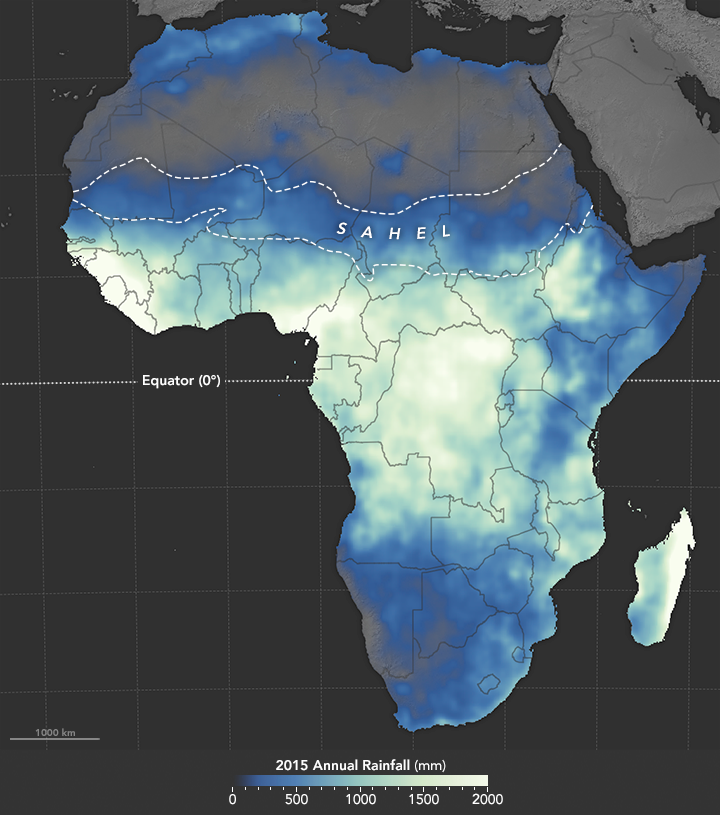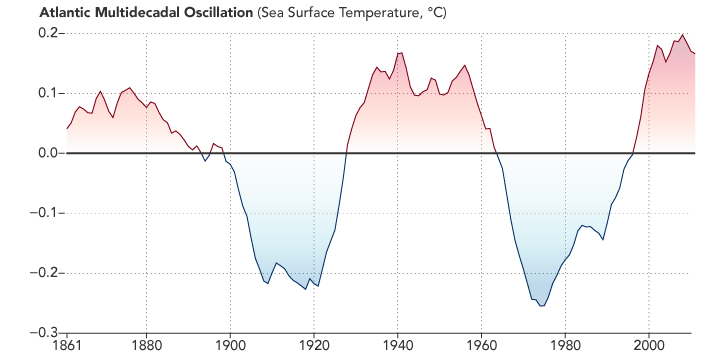


Though heavy seasonal rains soak Central Africa each year, the north and south ends of the continent are pretty dry. People living on the edges between—such as the Sahel—never know which way their year will go. The last decade has been fairly wet, but dry and wet years tend to alternate erratically. And in this vulnerable part of the world, the dry years can be devastating.
Most of the 50 million people in the Sahel rely on subsistence farming for food. But with soils of marginal quality, and with most farms entirely dependent on rainfall for watering the crops, growers face long odds even during good years. Those odds grew even longer in the 1960s when wet season rains became less reliable. In countries where poverty is widespread and societal safety nets are weak, a few dry years can easily lead to food shortages and famine. Between 1968 and 1972, hundreds of thousands of people in the Sahel died of starvation, and tens of millions were displaced due to food shortages.
Dry periods in the 1980s were just as devastating, with millions of people dying during droughts in Kenya and Ethiopia. The rains improved somewhat after 1990, but unusually dry years now alternate erratically with unusually wet ones, swinging the Sahel between feast and famine. As recently as 2012, a drought-triggered famine left 15 million people in the Sahel malnourished.

For decades, meteorologists and climatologists have been looking for clues about what causes the Sahel’s droughts. The evidence points to both natural and human culprits. The most important natural factor seems to be a cyclical shifting of ocean temperatures in the North Atlantic. Every three decades or so, the North Atlantic switches from being dominated by a patch of relatively warm water to having a patch of relatively cool water—a phenomenon that climate scientists call the Atlantic Multi-decadal Oscillation (AMO).
The reasons for this swap are poorly understood, but the consequences for the Sahel are not. When the North Atlantic is warm, large-scale weather patterns shift and bring more rain to the Sahel; when the North Atlantic enters a cool phase, the rains stay just to the south of the Sahel. During the worst droughts between 1960 and 1980, the North Atlantic was in a cool phase. The Sahel has been warmer and wetter since 1990, but there are hints now that the North Atlantic may be cooling again, meaning drought could return in coming years.
To learn more about drought in Africa, read our new feature “A Tale of Fire and Water: A NASA Scientist’s Quest to Understand the Rain in Africa.”NASA Earth Observatory images by Joshua Stevens, using precipitation data from the African Flood and Drought Monitor and Atlantic Multidecal Oscillation data from NOAA. Caption by Adam Voiland.